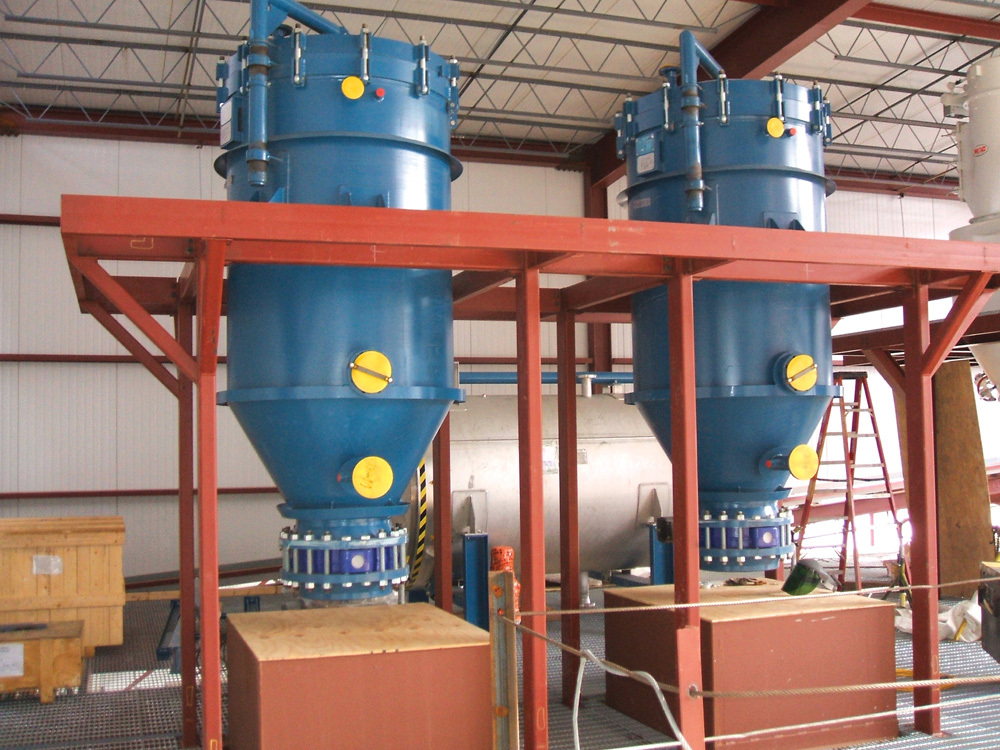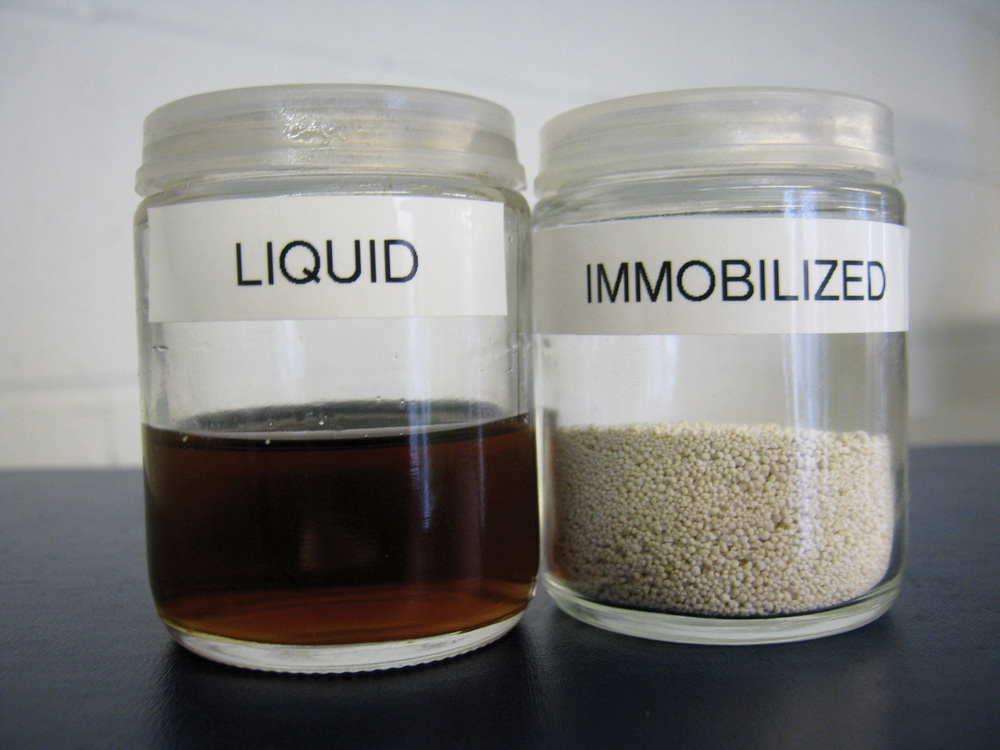Polishing Perspectives



PHOTO: CROWN IRON WORKS CO.
May 1, 2012
BY Erin Krueger
One size does not fit all when it comes to fuel polishing procedures, even in traditional transesterification plants. A variety of factors, including plant design and fuel specification goals, influence the type of backend processing equipment that a particular facility must employ to ensure that high-quality, on-spec fuel is produced.
Just as no single solution can meet the needs of all transesterification plants, future enzymatic plants are likely to require unique solutions. While initial research and development activities seem to predict that fuel resulting from enzymatic processing will generally require less backend processing to meet fuel specifications, some feedstocks may require additional polishing procedures.
One of the most common backend polishing measures employed at traditional biodiesel plants is filtration. In fact, Derek Masterson, product sales manager at Crown Iron Works Co., notes that filtration systems are included as a standard component of all the plants his company designs. “We use chilled fluid to cool the biodiesel to around 70 degrees Fahrenheit,” he says. The chilled biodiesel is then pushed through filters that remove any sterol glucosides or phospha-tides that make it through the process, as well as any other impurities that can be easily filtered out. “That step turns the biodiesel from almost meeting specification, to meeting specification,” he says.
Ultimately, the type of polishing process needed at a particular plant is a function of that plant’s design and which fuel specification it is trying to meet. For example, a facility that wants to meet the new ASTM D6751 specification for No. 1B fuel would need to achieve extremely low monoglyceride levels. “That would not necessarily work with filtration,” Masterson says. Rather, a plant may need to distill its fuel to meet that specification. The problem with distillation, he adds, is that it is expensive in both capital and operational costs. It also reduces yield.
While mechanical separation and distillation are only two of the numerous methods that can be used to improve the quality of product exiting the transesterification component of a plant, Masterson recommends that producers focus on the producing good fuel from the start rather than cleaning up low-quality fuel at the backend. A smart producer, he says, will look at the whole plant and focus on improving the production process itself, rather than trying to clean up poor quality that exits the transesterification process. The same goes for feedstock entering the plant. Rather than taking in low-quality feedstock and trying to figure out how to clean up the resulting biodiesel on the backend, Masterson highly recommends that a producer pretreat feedstock prior to processing.
Enzymatic Processing
While enzymes can be used by traditional plants to reduce the free fatty acid (FFA) level of incoming feedstock, the enzymatic production process in and of itself is markedly different than the transesterification process. Ernie DeMartino, founder of Biodiesel Experts International LLC, explains there are two primary ways enzymes can be used in biodiesel manufacturing: FFA reduction of a feedstock, or to aid in the conversion of feedstock into biodiesel.
DeMartino is working with Israel-based enzyme company TransBiodiesel Ltd. to deploy its enzyme products at commercial scale. As part of that effort, Biodiesel Experts International engineers and builds biodiesel plants that utilize the proprietary enzymes TransBiodiesel produces. DeMartino explains that the process of FFA reduction involves running feedstock mixed with approximately 12 to 13 percent methanol by weight through columns that are packed with enzymes.
Advertisement
Ahmed Tafesh, vice president of new business development and chief technology officer of TransBiodiesel, notes the enzymes produced by his company can be used for lowering the FFAs in different feedstocks through esterification with methanol to form fatty acid methyl esters and water. He also notes that his company has developed and commercialized a unique immobilized enzyme for the conversion of low-grade feedstocks, with FFA ranges from 0 to 100 percent, to biodiesel. Benefits of TransBiodiesel’s enzyme process include the ability to use wet feedstocks, or feedstocks that have not been dehydrated, low-temperature processing, and there is no need to neutralize the acid.
International enzyme company Novozymes is also pioneering the development of enzymes for biodiesel production. North Carolina-based Piedmont Biofuels LLC has designed its FAeSTER (fatty acid esterification) enzymatic biodiesel process using enzymes developed by Novozymes. Piedmont’s patent-pending, continuous esterification technology employs either immobilized or liquid enzymes to produce fuel. When FAeSTER was developed, it was designed for frontend esterification using immobilized enzymes. Now that Piedmont has proven liquid enzyme catalysis at commercial scale, the FAeSTER process is used on the backend to convert any FFAs into biodiesel as a polishing step.
Although virtually all biodiesel plants in existence currently use traditional, chemical-based transesterification to produce fuel, members of the industry familiar with the new and emerging enzymatic technologies seem confident the presence of these technologies will grow. Piedmont has proven its technology on a commercial-scale, while Biodiesel Experts International has taken orders for several enzymatic processing plants located in both North America and Asia.
Polishing Enzymatic Fuel
Information provided by Piedmont notes that there are several benefits associated with enzymatic processing. It does not produce soaps, and very little excess methanol enters the process. The production of high-quality glycerin is also a benefit. Post-processing needs are also either reduced or eliminated.
According to Per Munk Nielsen, Novozymes’ senior science manager, enzymes can be used in a polishing mechanism to reduce the FFA level of biodiesel resulting from the enzymatic process. Piedmont is currently employing enzymes for that purpose. According to Piedmont Founder Rachel Burton, her company is using both immobilized and liquid enzymes produced by Novozymes in its FAeSTER fuel polishing process.
“We see the FAeSTER esterification technique as an extension of our previous work in high free fatty acid pretreatment,” Burton says. “It is an integrated approach for a fully enzymatic biodiesel production process. Our pilot-scale data shows good enzyme reuse for the polishing procedure, which will strengthen the economics for commercial viability.”
Information published by Piedmont notes that, independent of feedstock, enzyme transesterification yields biodiesel with 2 to 3 percent FFAs. “The FAeSTER process can easily esterify or ‘polish’ this FFA directly into methyl esters,” Piedmont states.
Advertisement
While Piedmont is focused on the use of enzymes for FFA polishing, Nielsen says Novozymes plans to promote a caustic wash to remove FFAs resident in enzyme-catalyzed biodiesel. He notes that the caustic wash is generally cheaper, but does produce some effluent. The exact cost balance between the two options will largely vary depending on where a plant is located. In some regions, high costs to process wastewater might make enzymatic polishing more attractive. Alternatively, caustic wash might be the best option in areas where wastewater treatment costs less. Another consideration is that enzymes can be reused several times.
According to Nielson, Novozyme’s BioFAME process produces biodiesel within specifications. The transesterification typically results in approximately 2.5 percent FFA independent of the amount of FFA in the feedstock. The caustic wash his company recommends involves the use of sodium hydroxide. Soaps formed as a result of the wash are separated from the FFAs, which are then recycled back to the frontend of the plant.
Tafesh notes that the TransZyme enzyme product his company produces can be used to convert feedstock with FFA levels ranging from 2 to 100 percent into biodiesel that contains 3 to 4 percent FFA. The company’s other biodiesel enzyme, EsterZyme, can be used via a polishing mechanism to convert the remaining FFAs into biodiesel, resulting in a fuel product with less than 1 percent FFA. Alternatively, Tafesh notes, a producer can elect to use another polishing process, such an ion exchange or a caustic wash, to remove the remaining FFA portion of the fuel.
One benefit of using both enzymatic products to produce biodiesel rather than another polishing technique is that it allows producers to run an entire process without handling chemicals such as sulfuric acid, sodium hydroxide or sodium methylate, Tafesh says. No matter what type of polishing step a facility employs, one clear benefit of enzymatic processing is that it allows producers to take in lower-cost, higher FFA feedstocks and produce a high-quality, on-spec biodiesel.
DeMartino notes that the backend processing needs of an enzymatic plant, however, will differ slightly depending on whether the goal is to produce fuel that meets current ASTM specs, or current EN specifications. In either case, plants producing on-spec fuel via enzymatic processing generally will not have to employ any traditional backend processes, such as methanol removal or a dry-wash, he says.
“To produce ASTM by enzymatic [processing], you basically have on-spec fuel at the end, but the acid number is a little high,” DeMartino explains. “The simplest way we’ve found so far to reduce the acid number is a very mild caustic water wash.” The resulting waste material can be removed via a centrifuge, after which a reverse osmosis system separates the resulting soaps from the water.
Alternatively, plants that want to produce fuel meeting EN specifications will likely need to employ a distillation system. DeMartino attributes this need to the moisture content of biodiesel. While fuel with a moisture content of 1,000 to 1,500 parts per million of entrained or dissolved water will pass ASTM specifications, it will not meet EN specs. As ASTM works to tighten up biodiesel specifications, he says, it could also become more common for biodiesel producers employing both traditional and enzymatic processes to require distillation equipment in order to produce on-spec fuel.
While a mild caustic water wash has been shown to be sufficient to produce ASTM quality fuel using the vast majority of biodiesel feedstocks, DeMartino notes that one exception might be low-quality brown grease. When designing an enzymatic system that will take in brown grease as a primary feedstock, he says it will likely be necessary to integrate a distillation unit within the plant.
Author: Erin Voegele
Associate Editor, Biodiesel Magazine
(701) 540-6986
evoegele@bbiinternational.com
Upcoming Events





